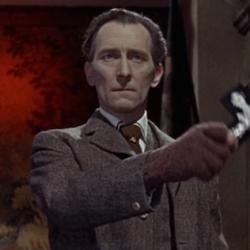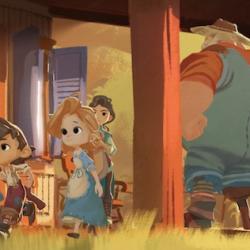Putting “film noir” and “musical” in the same sentence may seem absurd. If any film genre is sunlight and sentiment, seething with clappy optimism, it’s the musical. And noir is something different. Sheri Biesen’s Music in the Shadows shows that the two forms have cohabited for decades:
“The atmospheric world of the ‘noir musical’ was characterized by smoke, shadows, and moody strains of jazz and blues. . . . Storylines involved antiheroes—tormented performers and musicians—battling obsession and dysfunctional interpersonal relationships. They struggled equally with their art and with their ill-fated love triangles. Thus, these dark 1940s and 1950s noir musical films strayed from the norms of more typical musicals. Their plots uncovered what was happening backstage, contradicting the glamour onstage. What was supposed to stay in the shadows in unvarnished backrooms emerged into the spotlight.” If the musical was a drama about drama, a film about “putting on a show,” then noir musicals exposed the dark side: “Extraordinary films like Blues in the Night (1941), To Have and Have Not (1944), Gilda (1946), Black Angel (1946), The Man I Love (1947), The Red Shoes (1948), Young Man with a Horn (1950), A Star Is Born (1954), Young at Heart (1954), and Love Me or Leave Me (1955) pulled back the curtain to expose the seamy underside of ambition, performing, and stardom.” And the mixed genre has persisted, from Cabaret and All That Jazz to Pennies from Heaven all the way to Moulin Rouge.
Noir musicals traded in all the stereotypes of straight noir, including the femme fatale: These films “often featured musical women: bold, assertive, yet vulnerable ‘performing’ seductresses who worked as cabaret singers and dancers in jazz clubs, often alongside talented, brooding jazz musicians.”
Biesen suggests that recognizing the crossover of the two genres can help us make better sense of both: “Noir musicals suggest a new way of envisioning both musicals and noir. While musicals are usually assumed to be definitively upbeat and escapist in nature, many took on a darker tone. Moreover, even presumably nonmusical serious crime films, including film noir and earlier gangster pictures, included musical jazz performances. The musical has been around as long as the sound film.”










